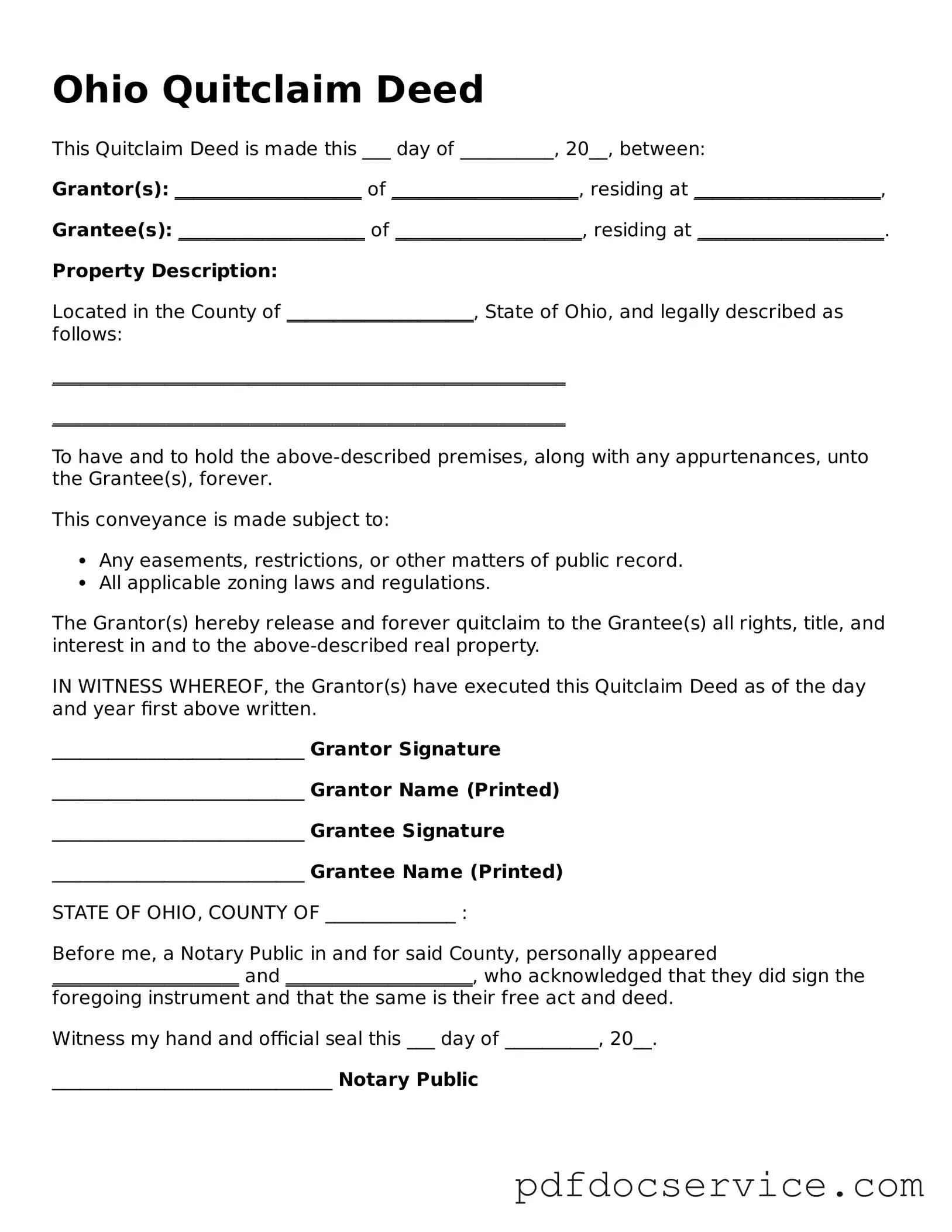The Ohio Quitclaim Deed form serves as a vital tool for property transfers, allowing individuals to convey their interest in real estate without making any guarantees about the title's quality. This form is particularly useful in situations where the parties know each other well, such as family members or friends, and trust that the transfer will be straightforward. It includes essential information such as the names of the grantor and grantee, a legal description of the property, and the date of the transaction. Importantly, the Quitclaim Deed does not protect the grantee against any claims or liens on the property, which sets it apart from other types of deeds. Understanding how to properly complete and file this form is crucial for anyone looking to transfer property in Ohio, as it ensures that the transaction is legally recognized and that the new owner can take possession of the property without complications. Additionally, while the Quitclaim Deed is often seen as a simple document, it is important to consider the implications of using it, especially regarding potential future disputes over property ownership.
